 Laura Spinella gifted me a digital copy of Ghost Gifts and an autographed copy of Foretold in a giveaway, and I loved them! So I wanted to spread the book passion. I’m pretty excited that she agreed to be on my blooming little blog. She’s supportive of other writers, no matter where they are on their journey. Some of her besties are writers.
Laura Spinella gifted me a digital copy of Ghost Gifts and an autographed copy of Foretold in a giveaway, and I loved them! So I wanted to spread the book passion. I’m pretty excited that she agreed to be on my blooming little blog. She’s supportive of other writers, no matter where they are on their journey. Some of her besties are writers.

Laura works for her web developer, so her website is “very custom!” It’s like an amusement park, with fascinating rides around every corner and tons of visual fun. She’s also on Twitter, Facebook, Google+, Goodreads, Pinterest, and Instagram.
Describe your writing environment and process, including research.
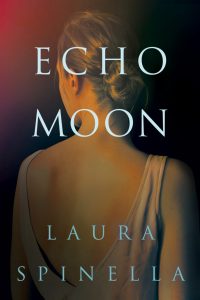
Most book writing occurs in my sunroom, which is…sunny! The room has a great vibe and it’s really where I do my best work. My desk faces the only wall in the room, so that provides a bit of built-in discipline. But the wall is covered in a collage of old postcards. They’re all of my hometown, Bayport, New York. The postcards provide a lot of inspiration. Interestingly, one card plays a pivotal role in my next book, Echo Moon.
Lots of writers like to work in coffee shops, libraries, or other people-oriented locations. That’s just not my style…or maybe I’m just lazy. I’m most comfortable in my own space, but I can and have worked in some unusual spots. When my middle daughter was a teenager, she was quite ill and spent a lot of time at Children’s Hospital in Boston. (She’s fine now!) I wrote most of my first novel, Beautiful Disaster, in various hospital rooms, sitting on linoleum floors, or in waiting rooms.
As for my research team? Mmm…that’d be the renowned team of Me, Myself & I. Naturally, I reach out to experts when necessary, but I do all the leg work. Last summer, I traveled to NYC to research early 20th century tenement housing, as well as making a trip to Coney Island. A portion of Echo Moon takes place in Luna Park, an incredible amusement arena that was a singular sight back in the day. Getting a place so rich in history right took a lot of research. Luckily, Coney Island’s museum curator couldn’t have been more helpful.
Talk about the publishing process.
My first novel was published in 2011—Beautiful Disaster. The book did well and went on to be a RITA finalist. I always say I wrote the first draft in about six weeks. From there it was about six years to publication. That included the learning curve of writing a novel, to securing a literary agent, to actually selling the book. The book was published on the cusp of e-books, so it was a very different world in terms of publishing.

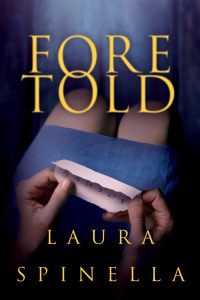
Echo Moon, my latest, is due out May 22nd. It’s the last installment (after Foretold) of the Ghost Gifts Novels. Ghost Gifts was a Kindle First, which is an Amazon program that opens your book up to a huge audience. I really had no intention of writing any more “ghost stories.” Ghost Gifts did very well and Montlake, my publisher, asked me to continue with the main character, Aubrey, Ellis, for two more books. I hadn’t anticipated anything like this.
Contractually, my next book was slated to be a women’s fiction novel, Unstrung. Looking back, I wish we’d put Unstrung on hold; the book kind of got lost in the Ghost Gifts shuffle. But Montlake has a fantastic publishing team in place—I really couldn’t ask for more in terms of a team effort, particularly the editing folks. They are top shelf.
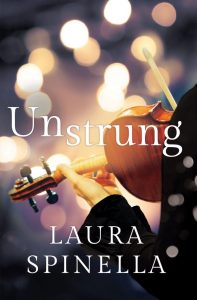
As far as in the moment publishing, we’re just gearing up Echo Moon marketing. I have a brand new street team, accessed via Facebook. I’ve always loved visiting with book clubs, and I thought this would be as close as I could come to creating an environment like that—a place to chat and chill with readers.
Tell me about your support system and reciprocity.
Naturally, readers are everything. You start with two or three readers and hope your writing attracts a larger audience. It’s an ongoing process in an extremely competitive market. I have a small group of published authors who are also close friends. One of them is my critique partner, so we trade a lot of publishing stories and share the stressful moments.

I had no author support when writing Beautiful Disaster—no real beta readers or other writers to share my work with. In fact, it’s kind of surprising I succeeded on any level! I learned, I think, from reading. I did end up with an extraordinary agent who gives incredible editorial advice. That said, I’m still a fairly private writer. I’ve grown in terms of a public persona, and I really do enjoy that part. But the writer in me is drawn to the solitude of the craft.
Elaborate upon life influencing writing and vice versa.
I’m not sure that my everyday life influences my writing all that much. When I go in that sunroom, it really feels like a whole other world. Writing, on the other hand, largely influences my everyday life. I’m fortunate to have an extremely supportive family. That’s code for they let me do my thing without a lot of fuss. Unless it’s crunch time, probably when I’m three months out from deadline, I try to keep to set writing hours. Those deadline months can get stressful because no matter how much time you have, it never feels like enough.
What pleases you the most about your chosen career?
Ha! Well, this would be easier to answer if I felt like I chose writing. I think writing chose me. It’s a strange life, a writing life. It’s isolating, exhilarating, frustrating, and fits into very few boxes. It can be difficult for other people to relate to, which is frustrating in an entirely different way. But that’s not what you asked, is it? Every time I finish a novel, there’s a brief moment where I sit back, look at the thing, and say, “Geez. How did that get there?” I like that moment a lot.

Connect with Laura on social media:
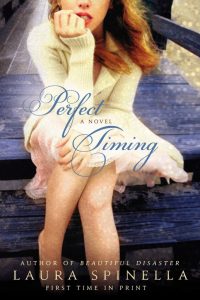
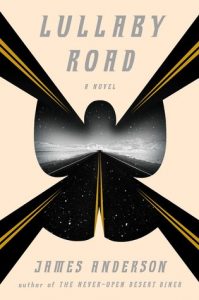 Ben Jones delivers necessities to the “desert rats” along the way to a small, isolated town in Utah. He keep his business to himself and ask his customers no questions. One day, while getting gas at the usual station, the owner informs him that he was left a package at one of the pumps. A man Ben knows only from tire purchases has left his child, guarded by a big dog. He can’t leave them out in the winter weather. As he prepares to leave the station, his “it’s complicated” neighbor rushes her baby to him to watch for the day. He now has two children and a dog to take on his treacherous drive to deliver items necessary to survival to the people whose experiences have led them to choose a life in a harsh climate away from society. The tale reads like a day in the life of Ben Jones as he interacts with characters who barely accept him for practical purposes, though this seems a non-typical day with the children, and then his friend, the “preacher,” a victim of hit-and-run. The story moves away from the surprise babysitting, down the path of mystery driver investigation, returning to the child at the end.
Ben Jones delivers necessities to the “desert rats” along the way to a small, isolated town in Utah. He keep his business to himself and ask his customers no questions. One day, while getting gas at the usual station, the owner informs him that he was left a package at one of the pumps. A man Ben knows only from tire purchases has left his child, guarded by a big dog. He can’t leave them out in the winter weather. As he prepares to leave the station, his “it’s complicated” neighbor rushes her baby to him to watch for the day. He now has two children and a dog to take on his treacherous drive to deliver items necessary to survival to the people whose experiences have led them to choose a life in a harsh climate away from society. The tale reads like a day in the life of Ben Jones as he interacts with characters who barely accept him for practical purposes, though this seems a non-typical day with the children, and then his friend, the “preacher,” a victim of hit-and-run. The story moves away from the surprise babysitting, down the path of mystery driver investigation, returning to the child at the end.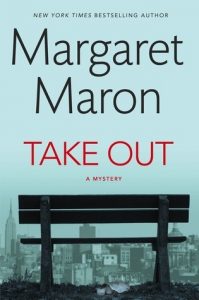 Sigrid is moving on from Nauman’s’s death, investigating a double homicide in a neighborhood with two suspects. A homeless man and a minor star of the opera industry grown old wind up dead together on a park bench in front of one’s family and the other’s friend, both of whom are suspected of killing one man purposely and the other accidentally through sharing their takeout from the nearby restaurant. Sigrid simultaneously searches for the answer to the mysterious reason for Nauman’s’s journey on which he died.
Sigrid is moving on from Nauman’s’s death, investigating a double homicide in a neighborhood with two suspects. A homeless man and a minor star of the opera industry grown old wind up dead together on a park bench in front of one’s family and the other’s friend, both of whom are suspected of killing one man purposely and the other accidentally through sharing their takeout from the nearby restaurant. Sigrid simultaneously searches for the answer to the mysterious reason for Nauman’s’s journey on which he died.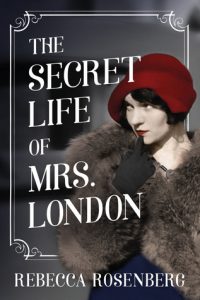 Charmian London took care of Jack London, typing as he dictated, editing his work, catering to his need for constant attention from “the crowd,” and picking up the pieces of his alcoholic binges. Products of their time, the Londons settled into a routine where Charmian sacrificed her life to Jack’s success, much as her friend Bessie Houdini did for her husband. Although Jack’s dalliances are often referenced, Charmian and Houdini’s affair is only hinted at throughout the story, before being stated outright only after Jack’s death.
Charmian London took care of Jack London, typing as he dictated, editing his work, catering to his need for constant attention from “the crowd,” and picking up the pieces of his alcoholic binges. Products of their time, the Londons settled into a routine where Charmian sacrificed her life to Jack’s success, much as her friend Bessie Houdini did for her husband. Although Jack’s dalliances are often referenced, Charmian and Houdini’s affair is only hinted at throughout the story, before being stated outright only after Jack’s death. Kimi spent her childhood in isolation due to an immune disease, her only friend, Rahul, the son of the police officer shot protecting her father, who sacrificed his own childhood to pay off the debt to her father for he and his siblings’ education. Love grew quietly, but was thwarted by class difference, complicated emotions, and, of course, things left unsaid. In this continuing story from the previous novel, the tone changes to the intimacy of an intense friendship created by Rahul supporting Kimi throughout her ongoing illness and eventual heart transplant. Switching from present tense to past tense when they first met, the reader watches their relationship grow and develop unevenly due to their differing class levels, and especially through the connection to her family through obligation on both sides. In the present, Kimi is in danger from the criminal operating the black market for stolen organs by murder. She must place all her trust in Rahul to aide her in finding out the truth behind her heart transplant, though in the end, it leads her back home to a horrifying secret.
Kimi spent her childhood in isolation due to an immune disease, her only friend, Rahul, the son of the police officer shot protecting her father, who sacrificed his own childhood to pay off the debt to her father for he and his siblings’ education. Love grew quietly, but was thwarted by class difference, complicated emotions, and, of course, things left unsaid. In this continuing story from the previous novel, the tone changes to the intimacy of an intense friendship created by Rahul supporting Kimi throughout her ongoing illness and eventual heart transplant. Switching from present tense to past tense when they first met, the reader watches their relationship grow and develop unevenly due to their differing class levels, and especially through the connection to her family through obligation on both sides. In the present, Kimi is in danger from the criminal operating the black market for stolen organs by murder. She must place all her trust in Rahul to aide her in finding out the truth behind her heart transplant, though in the end, it leads her back home to a horrifying secret.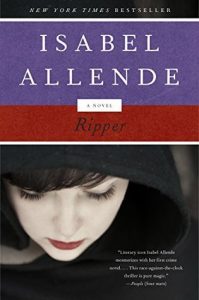
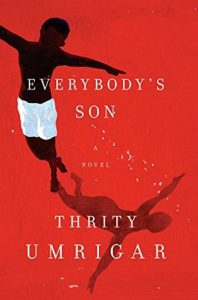 After the death of his son, Judge Coleman uses his influence and connections to foster and adopt 9-year-old African-American Anton, convincing his mother Anton is happier with the Colemans. She’d been kidnapped and drugged by her dealer, leaving Anton locked in their apartment during a heat wave with little food, until he escaped a week later, unaware of his mother’s whereabouts. Judge Coleman’s position and wealth boost Anton up through the ranks of politics, with Anton choosing to have no contact with a mother he believes rejected him. The secrets seep out eventually, damaging the Coleman’s marriage and Anton’s relationships with all of his parents, as Anton desperately tries to determine his identity.
After the death of his son, Judge Coleman uses his influence and connections to foster and adopt 9-year-old African-American Anton, convincing his mother Anton is happier with the Colemans. She’d been kidnapped and drugged by her dealer, leaving Anton locked in their apartment during a heat wave with little food, until he escaped a week later, unaware of his mother’s whereabouts. Judge Coleman’s position and wealth boost Anton up through the ranks of politics, with Anton choosing to have no contact with a mother he believes rejected him. The secrets seep out eventually, damaging the Coleman’s marriage and Anton’s relationships with all of his parents, as Anton desperately tries to determine his identity.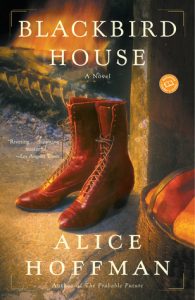 Blackbird House witnesses unusual love stories throughout its lifetime, from the young wife waiting for her husband to return from the sea to the orphaned young woman who had no home coming to live with the disfigured man who believed he would never feel the warmth of a woman. Often the yearning is only fulfilled when it can later refuse to be acknowledged. The townspeople care for the inhabitants of the isolated home.
Blackbird House witnesses unusual love stories throughout its lifetime, from the young wife waiting for her husband to return from the sea to the orphaned young woman who had no home coming to live with the disfigured man who believed he would never feel the warmth of a woman. Often the yearning is only fulfilled when it can later refuse to be acknowledged. The townspeople care for the inhabitants of the isolated home. Greer must find a perfect beach town for her next director to redeem her reputation after the fiasco of her last project. Cypress Key fits the director’s creative dream, complete with abandoned casino for the climax explosion, but Eben, the town’s mayor, seems to be in charge of everything, thwarting her every request to sustain his own vision for community growth rather than commercial development. Greer becomes torn between the townspeople and the movie crew that includes a spoiled star who attempts to scam on the mayor’s daughter. Betwixt unscripted stunts, the town’s resentful socialite, and the contrary agendas, Greer squeaks out with her wits and her sanity, finding more than she expected was possible in a small town.
Greer must find a perfect beach town for her next director to redeem her reputation after the fiasco of her last project. Cypress Key fits the director’s creative dream, complete with abandoned casino for the climax explosion, but Eben, the town’s mayor, seems to be in charge of everything, thwarting her every request to sustain his own vision for community growth rather than commercial development. Greer becomes torn between the townspeople and the movie crew that includes a spoiled star who attempts to scam on the mayor’s daughter. Betwixt unscripted stunts, the town’s resentful socialite, and the contrary agendas, Greer squeaks out with her wits and her sanity, finding more than she expected was possible in a small town.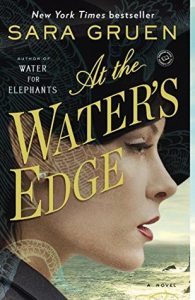 Maddie and Ellis are trapped by money—his family’s—while a second world war rages in Europe, as he cannot serve in the war due to a medical condition. When his father kicks them out of his family home for their unseemly behavior, Ellis determines to win back his love by redeeming the family name from his father’s loutish attempt to prove the Loch Ness monster. In Scotland, Maddie is alienated by her husband, whose loyalty is to his best friend and their travel companion Hank. She discovers more about her marriage and their friendship than Ellis does about Nessie, and she begins to question everything about her life, and even her husband’s “medical condition.” As Ellis and Hank display boorish behavior toward the locals, Maddie finds comfort in their compassion for her. She ends up caring for an injured employee of their inn, endearing herself to the innkeeper and his employees.
Maddie and Ellis are trapped by money—his family’s—while a second world war rages in Europe, as he cannot serve in the war due to a medical condition. When his father kicks them out of his family home for their unseemly behavior, Ellis determines to win back his love by redeeming the family name from his father’s loutish attempt to prove the Loch Ness monster. In Scotland, Maddie is alienated by her husband, whose loyalty is to his best friend and their travel companion Hank. She discovers more about her marriage and their friendship than Ellis does about Nessie, and she begins to question everything about her life, and even her husband’s “medical condition.” As Ellis and Hank display boorish behavior toward the locals, Maddie finds comfort in their compassion for her. She ends up caring for an injured employee of their inn, endearing herself to the innkeeper and his employees.